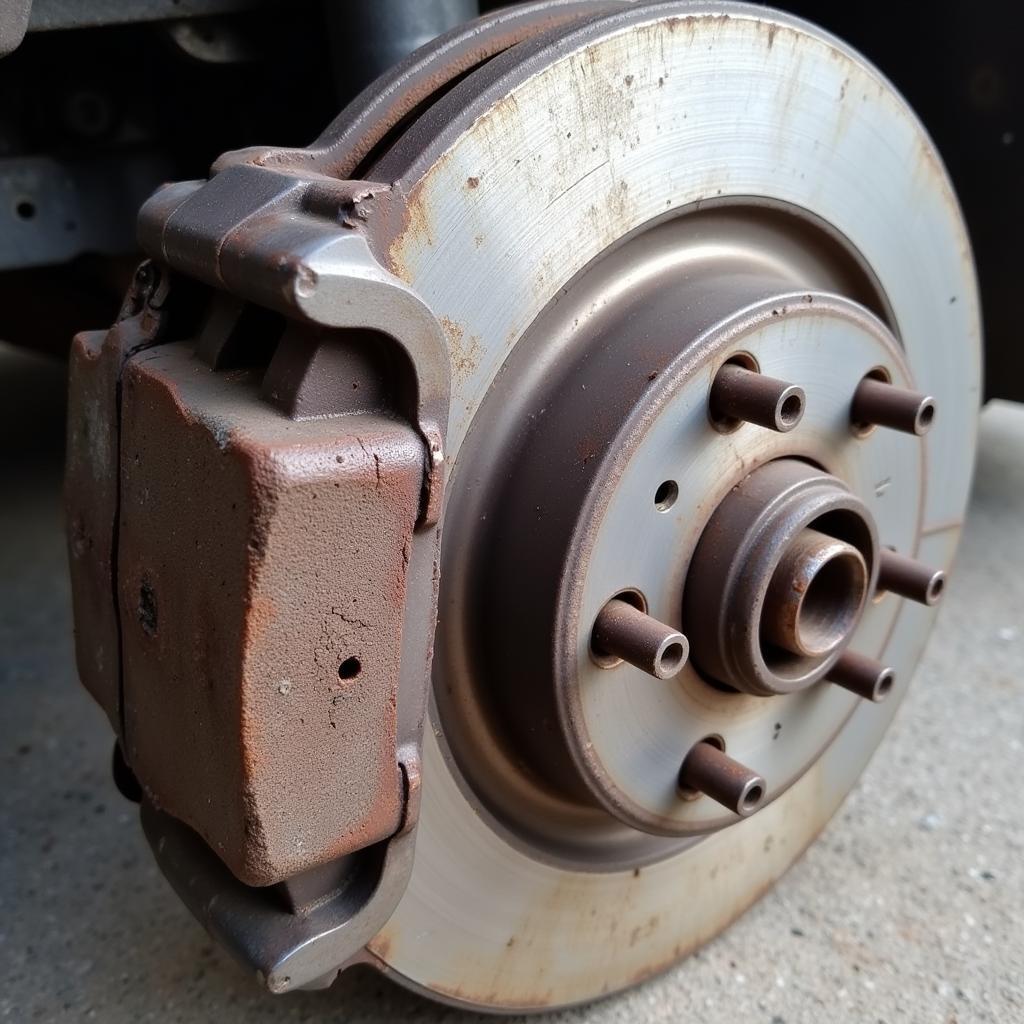The dreaded brake warning light on your 2004 Dodge Durango can be a source of anxiety. Understanding why your 2004 Dodge Durango brake warning light is on is crucial for your safety and the longevity of your vehicle. This article will guide you through the common causes, troubleshooting steps, and potential solutions, empowering you to address this issue effectively.
Understanding the Brake Warning Light
The brake warning light serves as a critical indicator of potential problems within your Durango’s braking system. It can illuminate for various reasons, ranging from low brake fluid to more serious issues like a malfunctioning ABS system. Ignoring this warning can lead to costly repairs and compromise your safety on the road.
Common Causes of a 2004 Dodge Durango Brake Warning Light
Several factors can trigger the brake warning light in a 2004 Dodge Durango. These include:
- Low Brake Fluid: This is the most common culprit. Brake fluid naturally depletes over time, and low levels can signal worn brake pads or a leak in the system.
- Worn Brake Pads: As your brake pads wear down, the brake fluid level drops, triggering the warning light.
- Faulty Brake Light Switch: This switch activates the brake lights when you press the pedal. A malfunctioning switch can sometimes illuminate the brake warning light as well.
- ABS Issues: Problems with the Anti-lock Braking System (ABS), such as a faulty sensor or module, can activate the warning light.
- Parking Brake Engaged: While seemingly obvious, it’s easy to overlook. Ensure the parking brake is fully released.
Troubleshooting Your 2004 Dodge Durango Brake Warning Light
Before rushing to a mechanic, you can perform some basic troubleshooting steps:
- Check the Parking Brake: Make sure the parking brake is fully disengaged.
- Inspect Brake Fluid Level: Locate the brake fluid reservoir under the hood and check the fluid level. If it’s low, add brake fluid that meets the manufacturer’s specifications.
- Examine Brake Pads: Visually inspect your brake pads through the wheel spokes. If they appear thin or worn down, they likely need replacement.
When to Seek Professional Help
If the brake warning light persists after these initial checks, it’s crucial to consult a qualified mechanic. Diagnosing ABS issues or other complex brake problems requires specialized equipment and expertise.
 Inspecting Brake Pads on a 2004 Dodge Durango
Inspecting Brake Pads on a 2004 Dodge Durango
“Ignoring a persistent brake warning light can lead to dangerous and expensive consequences,” advises Michael Stevens, ASE Certified Master Technician. “A seemingly minor issue can quickly escalate into a major brake failure.”
Preventing Future Brake Warning Light Issues
Regular maintenance is key to preventing brake problems. Adhering to a recommended maintenance schedule that includes brake inspections can help identify potential issues before they become serious.
 2004 Dodge Durango Brake System Diagram
2004 Dodge Durango Brake System Diagram
“Preventive maintenance is always the best approach,” adds Stevens. “Regular brake inspections can save you money and headaches in the long run.”
Conclusion
The 2004 Dodge Durango brake warning light is a vital safety feature. Addressing the underlying issue promptly ensures your vehicle’s braking system operates effectively, keeping you safe on the road. Don’t ignore this warning – take action to ensure your safety and the longevity of your Durango.
FAQ
- How often should I check my brake fluid level? It’s recommended to check your brake fluid level at least once a month.
- Can I drive my Durango with the brake warning light on? While it’s possible, it’s highly discouraged. Driving with a potential brake problem puts you and others at risk.
- How much does it cost to replace brake pads on a 2004 Dodge Durango? The cost varies depending on the type of brake pads and labor rates, but it typically ranges from $150 to $300 per axle.
- What is ABS and why is it important? ABS, or Anti-lock Braking System, prevents wheel lockup during hard braking, allowing you to maintain steering control.
- How often should I have my brakes inspected? Brake inspections are typically recommended every 12,000 miles or once a year, whichever comes first.
- Can a faulty brake light switch trigger the brake warning light? Yes, in some cases, a faulty brake light switch can illuminate the brake warning light.
- Where can I find the brake fluid reservoir in my 2004 Dodge Durango? The brake fluid reservoir is usually located under the hood, near the firewall on the driver’s side. It’s a clear plastic container with a marked minimum and maximum fill line.
